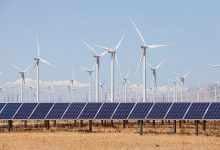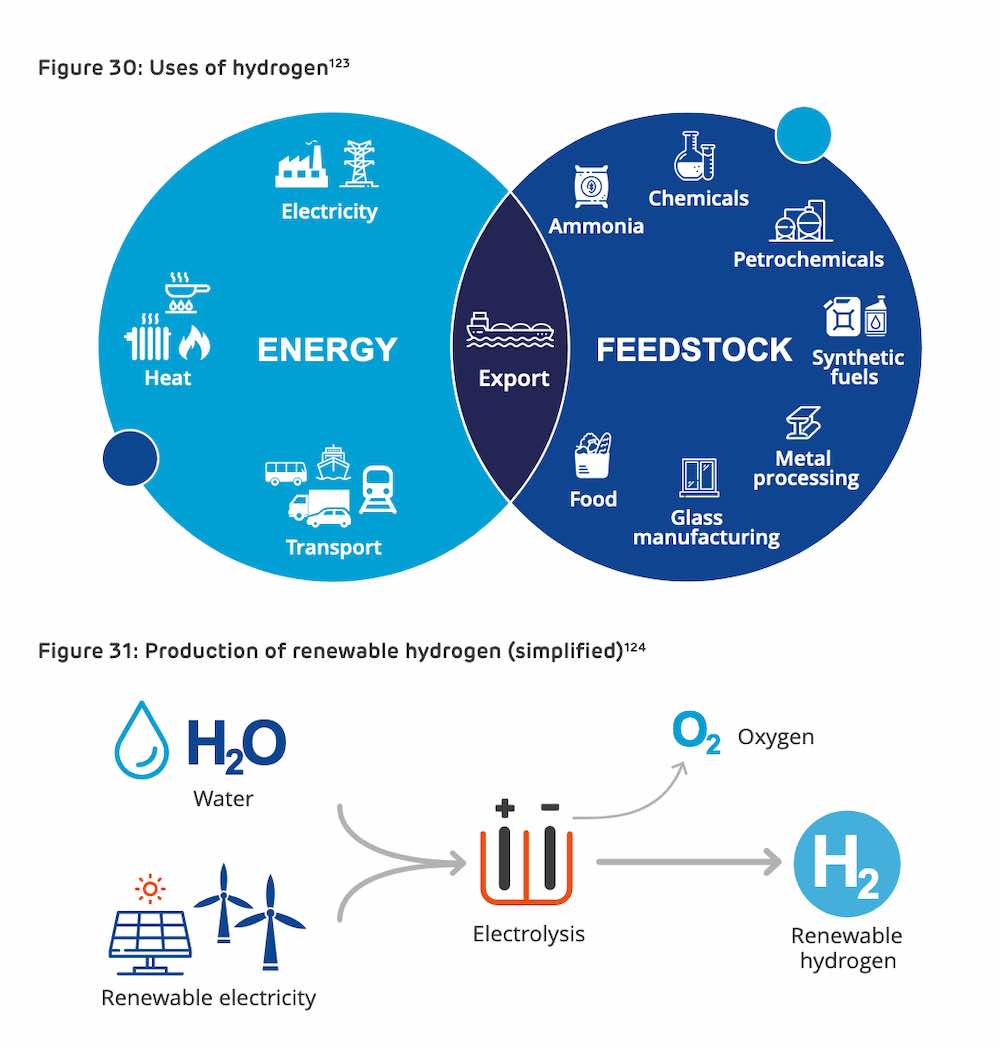Western Australia has reasserted its ambitious renewable hydrogen plans, saying it wants to secure a 12 per cent share of the global market by 2030, roughly on par with its share in gas exports today.
The 2030 target was outlined in the McGowan government’s State Infrastructure Strategy, a 20-year blueprint for planning and investment decisions, and focuses on cheaper renewable generation technologies and the state’s target of net-zero carbon emissions by 2050.
The report points to the huge potential of the state for renewable hydrogen production, which in May the WA hydrogen minister said was on track to drive the development of 100 gigawatts of new solar and wind capacity in the coming decade, and up to 200GW by 2040.
“By 2030, the state government has set a target of WA’s market share in global hydrogen exports being similar to its share in LNG today,” the Infrastructure Strategy says. “For context, in 2019 WA accounted for 12 per cent of global LNG exports.”
Renewable hydrogen is just in its infancy as a technology, with just a few scattered projects in operation across the world. But the scale of ambition – and the potential to duplicate, and replace the existing LNG industry is enormous.
As RenewEconomy has reported, the state is already host to around 30 renewable hydrogen projects and proposals, including the newly announced 50GW project unveiled by CWP and Intercontinental in the state’s south, its 26GW Asia Renewable Energy Hub in the Pilbara, along with Andrew Forrest’s aspirational 40GW plan in the same region and multiple smaller projects proposed by Siemens, BP and others.
But these projects are either still vague about their detail, or still have much work to be done before coming to fruition, so the government’s numbers indicate a massive and rapid scale up of opportunities.
Working in WA’s favour, the draft Strategy notes, are the state’s “excellent” co-located wind and solar resources and the existing Renewable Hydrogen Strategy that has set out a vision, mission and strategic focus areas for a future industry.
“By capitalising on its comparative advantages, WA has the potential to establish itself as a leading participant in the rapidly developing global hydrogen market,” the report says.
“In a hotly contested national and global environment, government action should be prioritised with coordinated plans across state agencies and [government trading enterprises].
“Hand in hand with industry, the state government should continue to prepare for legislation and policy amendments, and plan for a pipeline of enabling infrastructure for the hydrogen industry, including ports, roads, water and energy transmission,” it says.
Already, the report notes, work is underway on a review of the state’s policy and legislative framework; expressions of interest for hydrogen development at Oakajee; and supply chain modelling to identify limitations affecting the renewable hydrogen export industry.
But it recommends a series of updates to the state’s existing hydrogen work program, including the acceleration of legislation and policy reform and the stimulation of domestic market demand as a precursor to the establishment of an export industry.
The report also recommends a focus on finding those geographical sweet spots in the state that combine strong renewable energy resources, existing electricity grid and gas networks, port facilities, road networks, a skilled workforce and market proximity.
And it calls for an investigation into the feasibility of a hydrogen refuelling network on key freight routes across the state through the planned detailed supply chain model for renewable hydrogen.
However, the report also factors in “blue hydrogen,” which it describes as produced from natural gas, coupled with carbon capture and storage.
It says this shade of hydrogen is “likely to play a role as a transitional energy source” using the state’s existing LNG capability, infrastructure, and customer base to generate initial growth.
“This is reflective of the forecasts which suggest it will take 10 to 15 years for green hydrogen to achieve price parity with blue hydrogen,” the report notes, suggesting blue hydrogen as an “interim step”.











